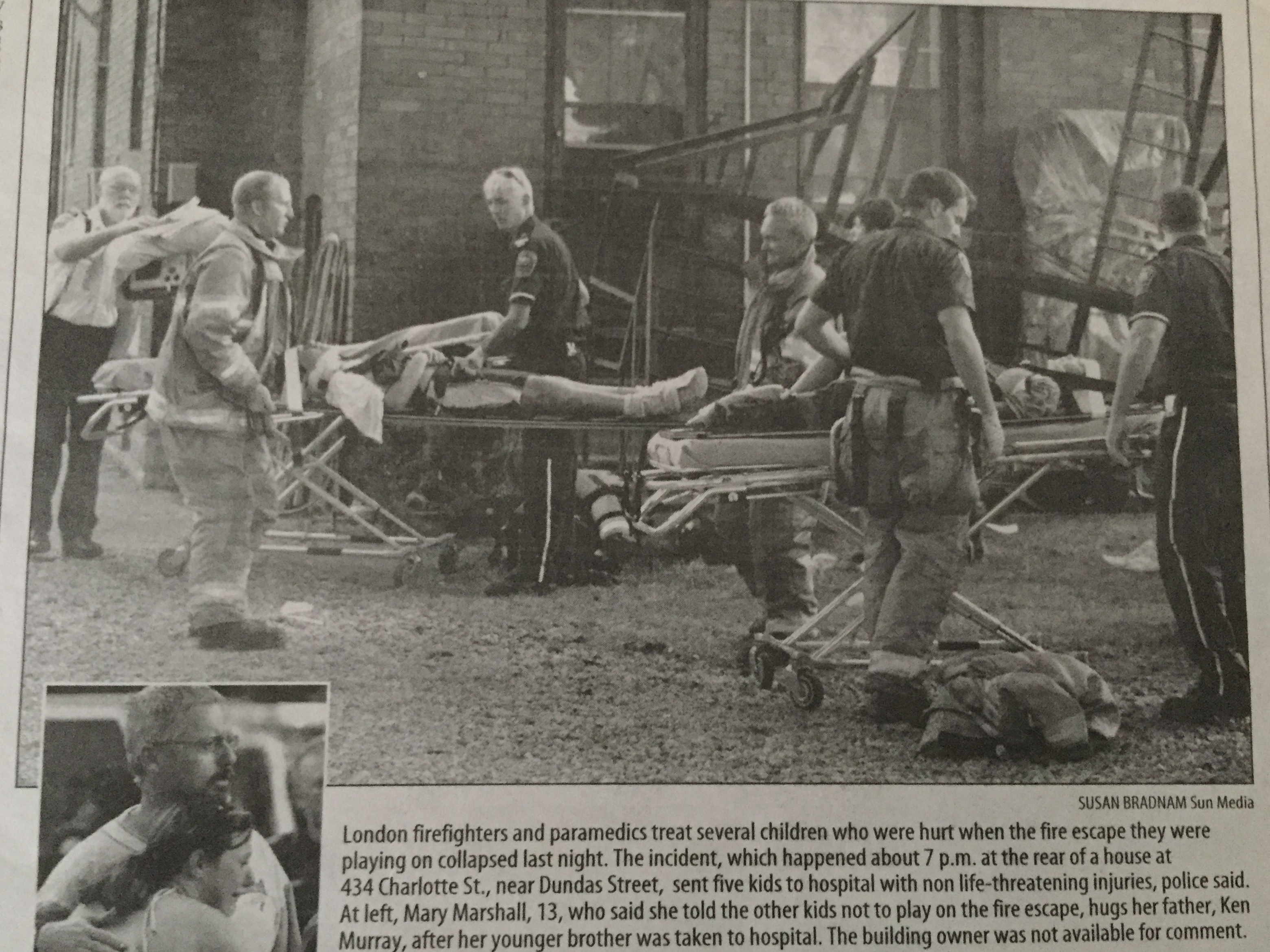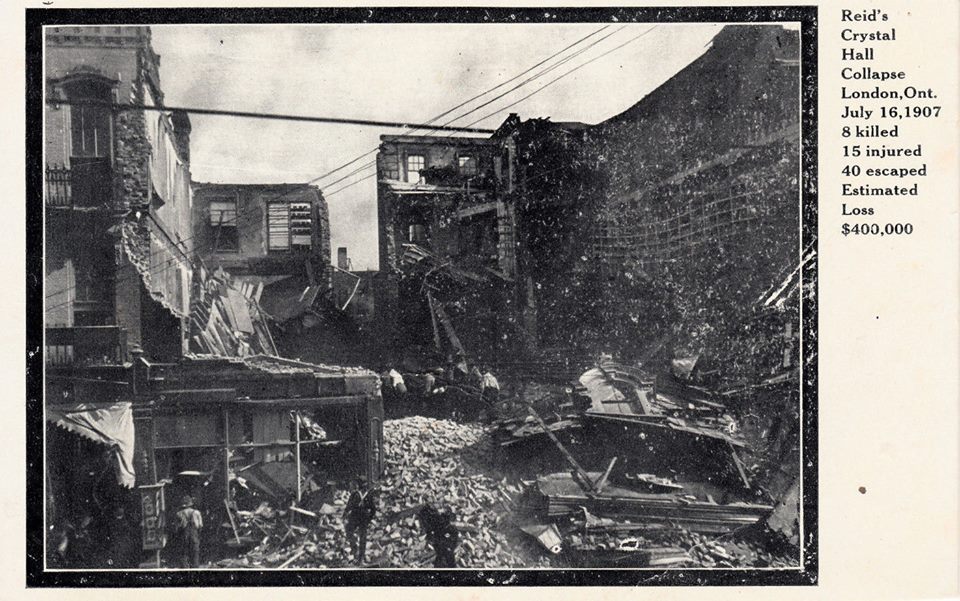by Christopher Doty
I instantly abandoned all hope of being alive more than two or three minutes…for a time all was black before my eyes.
With city status looming, officials of the town of London began construction of a three-story building to house the mayor and councilors. Completed in late 1854 and enlarged in the 1880s, London City Hall stood proudly on the west side of Richmond Street, just south of Dundas Street, for over one hundred years.
But the building’s grand Second Empire architecture belied the structural problems inside. Although London had passed its first building bylaw in 1893, this regulation was largely ignored when the mayor’s first floor offices were renovated a few years later. During the work, a wall was removed and replaced by a twelve inch thick wooden beam, which supported the floor of the auditorium above.
On election night, 1898, a large crowd assembled on the second floor to cheer London’s new mayor-elect, Dr. John Wilson. By 9 o’clock the room was filled to capacity, with scarcely any breathing space. Around 9:30 the final speaker for the evening, R. M. C. Toothe, was making his way to the platform when a loud crack reverberated through the room. The wooden support beam below had snapped through.
The floor of the auditorium slowly sank for a second or two – and then caved in entirely, dumping an estimated 250 people into the offices below – followed by a 500 pound safe and a steam radiator. As he was pitched head first into the pit, Toothe thought to himself, “Now this is going to be a horrible death.”
“I instantly abandoned all hope of being alive more than two or three minutes…for a time all was black before my eyes,” wrote Harry Atkinson, a newspaper reporter who had fallen through the floor. “I saw the face of the little boy who had sat near me at the table. He was lying beside me and crying for his mother…Other faces were very close to me, but I recognized none. They were partly covered with blood and, more frightful still, with expressions of agony.”
Twenty three people were killed – including a former city alderman – and another 150 were seriously hurt. Bodies were piled seven and eight deep in the pit below. It took hours to separate the living from the dead. One of the fatalities was John Burridge who had survived the Victoria Day Disaster 17 years earlier.
Burridge’s head had been crushed so badly by the falling safe that he had to be identified by his beard.
Local members of the provincial and federal legislature canceled engagements and returned home while Queen Victoria sent condolences to the victims. A red-faced city engineer, whose office had become an impromptu death pit following the floor’s collapse, blamed the crowd for the disaster:
“I am of opinion that the pressure of the mass of humanity into the northeast corner on and around the (speaker’s) platform and on the seats, and the tremendous stamping of feet on the floor by the very excited crowd, supplied the pressure and the jar to cause an abnormal demand on the strength of the supports…It was the tremendous dead weight around the platform that caused the collapse.”
Despite the terrible irony of the accident, little was done to put any teeth into the city’s building regulations. It would take ten years, and another deadly structural collapse at Reid’s Crystal Hall, before London began to take its own bylaws seriously.
(Source: Notebook from Yesterday)




